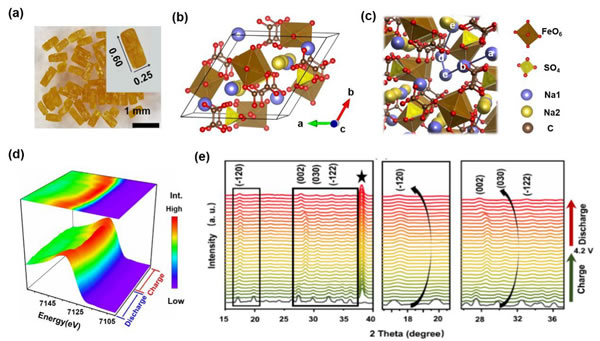Recently, Tang Yongbing, a researcher of the Functional Thin Film Materials Research Center of the Shenzhen Institute of Advanced Technology, Chinese Academy of Sciences, and his team members jointly developed a new type of sodium ion battery cathode material with the National Institute of Synchrotron Radiation Light Sources in Thailand. The positive electrode material is low in cost and environmentally friendly. This work has important reference significance for the development of low-cost environmentally friendly electrode materials and energy storage devices. Related research results A low-cost and environmental friendly mixed polyanionic cathode for sodium-ion storage ("a low-cost and environmentally friendly mixed polyanionic sodium ion battery cathode material") has been published online in "German Applied Chemistry" (Angew . Chem. Int. Edi, 2019, DOI: 10.1002 / anie.201912272). Traditional lithium-ion batteries (LIBs) have been widely used in portable electronic devices and electric passenger tools. However, due to the scarcity and uneven distribution of lithium resources and the scarcity of cobalt resources used in cathode materials, LIBs are difficult to meet the needs of large-scale energy storage applications. Sodium ions have similar chemical properties to lithium and are rich in reserves, so sodium ion batteries have important application prospects in the field of large-scale energy storage. At present, the main technical bottleneck restricting the application of sodium ion batteries is the lack of suitable and cheap cathode materials. The main reason is that sodium ions have a larger ion radius than lithium ions, and it is relatively difficult to extract and insert sodium ions in the positive electrode material, which requires a more stable crystal skeleton and a larger ion diffusion channel. Based on the above considerations, Tang Yongbing and his team members Song Tianyi, Yao Wenjiao, Zheng Yongping and others have successfully developed a new type of Na2Fe (SO4) (C2O4) · H2O sodium electric cathode material through the combination of theoretical calculation and experiment. The sodium electric cathode material exhibits excellent electrochemical reversibility and stability. Further in-situ synchrotron radiation and XRD characterization and first-principles calculations clarify that the electrochemical activity of the material originates from the Fe2 + / Fe3 + redox pair; the high electrochemical stability results from the material ’s large-sized sodium ion migration channel And high crystal structure stability. This work is of great significance for developing new electrode materials and promoting the development of high-efficiency and low-cost battery technologies. Figure: New sodium ion cathode material. (a) Single crystal material, crystal structure analysis (b) and schematic diagram of sodium ion diffusion path (c), near-edge X-ray absorption spectrum (d) and in-situ XRD spectrum (e) of synchrotron radiation during charging and discharging. Magnetic Motor Starter ,Permanent Stepper Motor,Pm Stepper Motor,Stepper Gearmotor Permanent Magnets Ningbo Besten Magnet Co., Ltd. , https://www.bestenmagnets.com